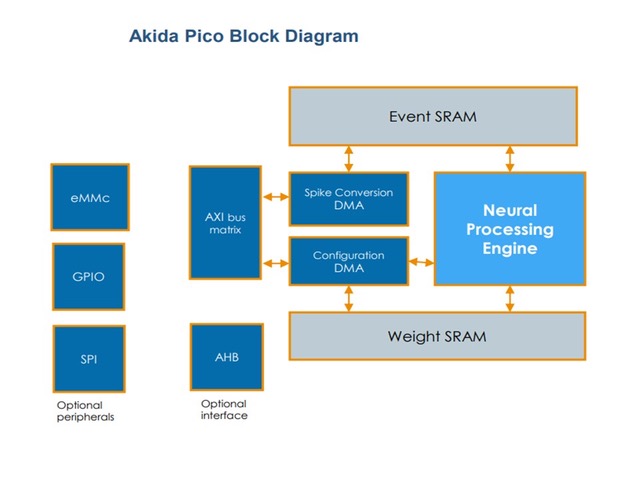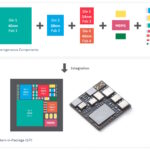 BrainChip Holdings Ltd has introduced the Akida Pico, a power-efficient acceleration co-processor. This new product enables the creation of compact, energy-efficient, portable, and intelligent devices for wearable and sensor-integrated AI applications in consumer, healthcare, IoT, defense, and wake-up sectors.
BrainChip Holdings Ltd has introduced the Akida Pico, a power-efficient acceleration co-processor. This new product enables the creation of compact, energy-efficient, portable, and intelligent devices for wearable and sensor-integrated AI applications in consumer, healthcare, IoT, defense, and wake-up sectors.Akida Pico accelerates specific neural network models to create an energy-efficient, digital architecture. It enables secure personalization for applications including voice wake detection, keyword spotting, speech noise reduction, audio enhancement, presence detection, personal voice assistant, automatic doorbell, wearable AI, and appliance voice interfaces.
This innovation from BrainChip is built on the Akida2 event-based computing platform configuration engine, which can operate with power suitable for battery-powered devices. Akida Pico provides an efficient footprint for waking up microcontrollers or larger system processors, using a neural network to filter out false alarms and preserve power consumption until an event is detected. It is designed for sensor hubs or systems that need continuous monitoring using battery power with the occasional need for additional processing from a host.
BrainChip’s MetaTF software flow allows developers to compile and optimize their specific Temporal-Enabled Neural Networks (TENNs) on the Akida Pico. MetaTF supports models created with TensorFlow/Keras and Pytorch, enabling users to develop and deploy AI applications for the Edge without learning a new machine language framework.
Akida Pico offers a standalone NPU core with low power consumption, support for power islands to minimize standby power, an industry-standard development environment, and a compact logic die area. It can optimize overall die size with configurable data buffers and model parameter memory.
BrainChip’s Akida is an event-based compute platform suitable for early detection and low-latency solutions in robotics, drones, automotive, and traditional sense-detect-classify-track applications. The company provides software, hardware, and IP products that can be integrated into existing and future designs, with a roadmap for customers to deploy multi-modal AI models at the edge.





Leave a Reply